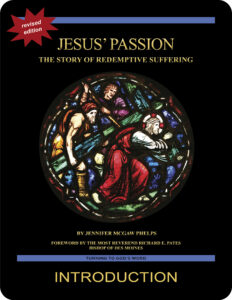repentance
 In the Gospel According to Matthew 3:1–12 (NABRE), Jesus’ cousin John preaches the importance of repentance for the forgiveness of sins. In the system of the Old Covenant, forgiveness occurred when something of value was traded in payment for a debt that had been incurred. The concept of redemption describes this buying back of a debt. John the Baptist’s emphasis on repentance as a part of the forgiveness of sins marks a departure from the Old Testament paradigm. What exactly is repentance, and why is it so important for the forgiveness of sins?
In the Gospel According to Matthew 3:1–12 (NABRE), Jesus’ cousin John preaches the importance of repentance for the forgiveness of sins. In the system of the Old Covenant, forgiveness occurred when something of value was traded in payment for a debt that had been incurred. The concept of redemption describes this buying back of a debt. John the Baptist’s emphasis on repentance as a part of the forgiveness of sins marks a departure from the Old Testament paradigm. What exactly is repentance, and why is it so important for the forgiveness of sins?
The Greek word for repentance is μετάνοια (metanoia), which literally means “rethinking.” At the core of the idea of repentance is a reexamination of our values and a looking back at our lives. Repentance here is essentially the same as we think of contrition in the Church today. While the Old Covenant view is all about repairing or paying back the consequences of a sin (“I’m sorry I got caught”), genuine repentance involves an interior change, truly being sorry for sinful behavior—whether we experienced adverse consequences or not. This rethinking, moreover, necessarily involves conversion or turning from our old ways toward something new.
Consider the areas of your life where you stand in need of forgiveness from God. Have you truly repented from your behaviors? If not, what might be standing in your way?
related topics: afterthought; disguise; sin
you also may like our free Lenten study of Jesus’ Passion (digital only)
 Jesus’ Passion: The Story of Redemptive Suffering is a five-lesson Catholic Bible study offering an in-depth look at the biblical foundations of the movie The Passion of the Christ. This revised study, which has been granted an imprimatur, contains all of the original material of the 2004 edition as well as many new features in an improved, reader-friendly format. Click on the book’s cover to view the introduction. Free digital lessons of Jesus’ Passion: The Story of Redemptive Suffering are available on the website during Lent.
Jesus’ Passion: The Story of Redemptive Suffering is a five-lesson Catholic Bible study offering an in-depth look at the biblical foundations of the movie The Passion of the Christ. This revised study, which has been granted an imprimatur, contains all of the original material of the 2004 edition as well as many new features in an improved, reader-friendly format. Click on the book’s cover to view the introduction. Free digital lessons of Jesus’ Passion: The Story of Redemptive Suffering are available on the website during Lent.
 Click on the picture of the statue of Moses with horns (above) to learn more about Lost in Translation. A new entry is archived each Monday. Contact us to receive Lost in Translation by email every week. You may use any of the contact links on our website to ask Matthew a question.
Click on the picture of the statue of Moses with horns (above) to learn more about Lost in Translation. A new entry is archived each Monday. Contact us to receive Lost in Translation by email every week. You may use any of the contact links on our website to ask Matthew a question.
